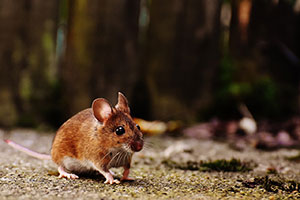Gardens featuring decked areas are very popular in the UK — but what do you about keeping it safe from pests? In London, more than 100 rodent complaints are made every day. Although this doesn’t mean that you’re at risk, it’s worth making a few quick and simple preparations to stop potential pests from making your garden their homes. For help on keeping your decked garden safe from unwanted creatures, check out our top tips for safeguarding your decking from a pest invasion.
Block unwanted animals
Decked areas often feature gaps underneath, which make perfect nest for unwanted guests. Pests won’t be able to make a home under your decked areas if they can’t get in to begin with, so investing in extra materials to create a barrier is worth it.
To help block the invasion of pests, you can either do it yourself or pay a professional to sort it out. Basically, you need to get wood, mesh or chicken wire and run it along the entire edge of your decking between the boards and the ground. If you’re worried that this will ruin your decking’s aesthetic appeal, you can install a wooden trellis and have the mesh running behind it. Then, arrange potted plants or flowerbeds around your decking to mask the mesh further.
Any material you use must be sturdy with zero entry points — remember, rats can squeeze through gaps as small as half an inch in size.
Stave off a pest influx
The golden rule of pest-proofing any area is to make it as uninhabitable as possible.
Rats and mice are constantly scrounging for food, so you must ensure that your decking is clear and clean at all times. Keep rubbish and refuse bags tied tightly and placed inside a bin with the lid shut. If you have a get-together on your decking, make sure you thoroughly clear up and clean the decking so that no sauces or dropped food remain which could entice rodents and other critters. Remember; rats, mice and hedgehogs will also eat birdfeed, so make sure to opt for a birdfeeder that isn’t placed on the floor or a table and put it away from your decking.
refuse bags tied tightly and placed inside a bin with the lid shut. If you have a get-together on your decking, make sure you thoroughly clear up and clean the decking so that no sauces or dropped food remain which could entice rodents and other critters. Remember; rats, mice and hedgehogs will also eat birdfeed, so make sure to opt for a birdfeeder that isn’t placed on the floor or a table and put it away from your decking.
Of course, pests may first choose to make homes on the outskirts of your garden before moving to underneath your decking. So, trim your hedges, bushes and anything else that offers shelter. If your main pest problem is birds, movement is a great deterrent. Try hanging something that moves — like a wind chime or wind spinner — to help prevent birds from making a mess on your decking.
Catching pests
A controversial pest-ridding method is trapping. Although, this doesn’t mean killing the creature. Non-lethal traps and scent repellents are just as effective.
If you want to give scents a try, there are a few aromas that rats and mice detest. For example, rodents hate the smell of garlic, peppermint and hot spices. So, why not plant a peppermint tree around the edges of your decking or sprinkle cayenne around potential entry points to deter vermin from nesting? Of course, there are also plenty of commercial rat and mice repellents you can buy that will work to keep pests at bay.
Alternatively, many people are turning to non-lethal traps, as they’re a more humane way to physically remove the pest. Place these around your decking and make sure to release the rodent at least one mile from your home once caught. But forget cheese; sweet treats work best to lure mice. If you prefer, buy an ultrasonic pest repellent. Compact and discreet, these devices are ideal for placing by your decking and emit high-frequency sound waves that rodents can’t stand — and we can’t hear.
Seal your decking
Aside from rodents and birds, woodworm — of which there are three kinds in the UK — can cause headaches for many with decked spaces. The common furniture beetle is usually what people mean when they say ‘woodworm’, but the house longhorn and deathwatch beetles are far more destructive — although thankfully rarer.
Although it’s generally treatable, it still takes time and money to get rid of woodworm. The first step to prevention is ensuring your wood remains as dry as possible. This might be difficult for large areas like your decking, but your tables and chairs should be relatively safe under a waterproof cover. Sealing your wood with varnish is a good shout too. This creates a barrier that prevents female wood-boring beetles from laying eggs in the pores of the wood.
Of course, you might be reading this too late and already have an infestation of woodworm. But how would you know? If you can see small holes across your decking and furnishings — these are usually in a cluster and often about 1mm wide — there might be woodworm present. Although this is treatable, you first need to identify which type of woodworm is doing the damage, so it might be worth seeking professional advice. Common furniture beetle problems can be treated yourself using products that you can buy online. However, if the culprits are house longhorn or deathwatch beetles, you may need to treat by injection.
Garden owners that have composite decking will notice that their wood doesn’t rot, so you also might want to consider opting for this type of decking if you want to prevent woodworm.
Keep these tips in mind and start pest-proofing your garden from common pests.
Sources:


 refuse bags tied tightly and placed inside a bin with the lid shut. If you have a get-together on your decking, make sure you thoroughly clear up and clean the decking so that no sauces or dropped food remain which could entice rodents and other critters. Remember; rats, mice and hedgehogs will also eat birdfeed, so make sure to opt for a birdfeeder that isn’t placed on the floor or a table and put it away from your decking.
refuse bags tied tightly and placed inside a bin with the lid shut. If you have a get-together on your decking, make sure you thoroughly clear up and clean the decking so that no sauces or dropped food remain which could entice rodents and other critters. Remember; rats, mice and hedgehogs will also eat birdfeed, so make sure to opt for a birdfeeder that isn’t placed on the floor or a table and put it away from your decking.